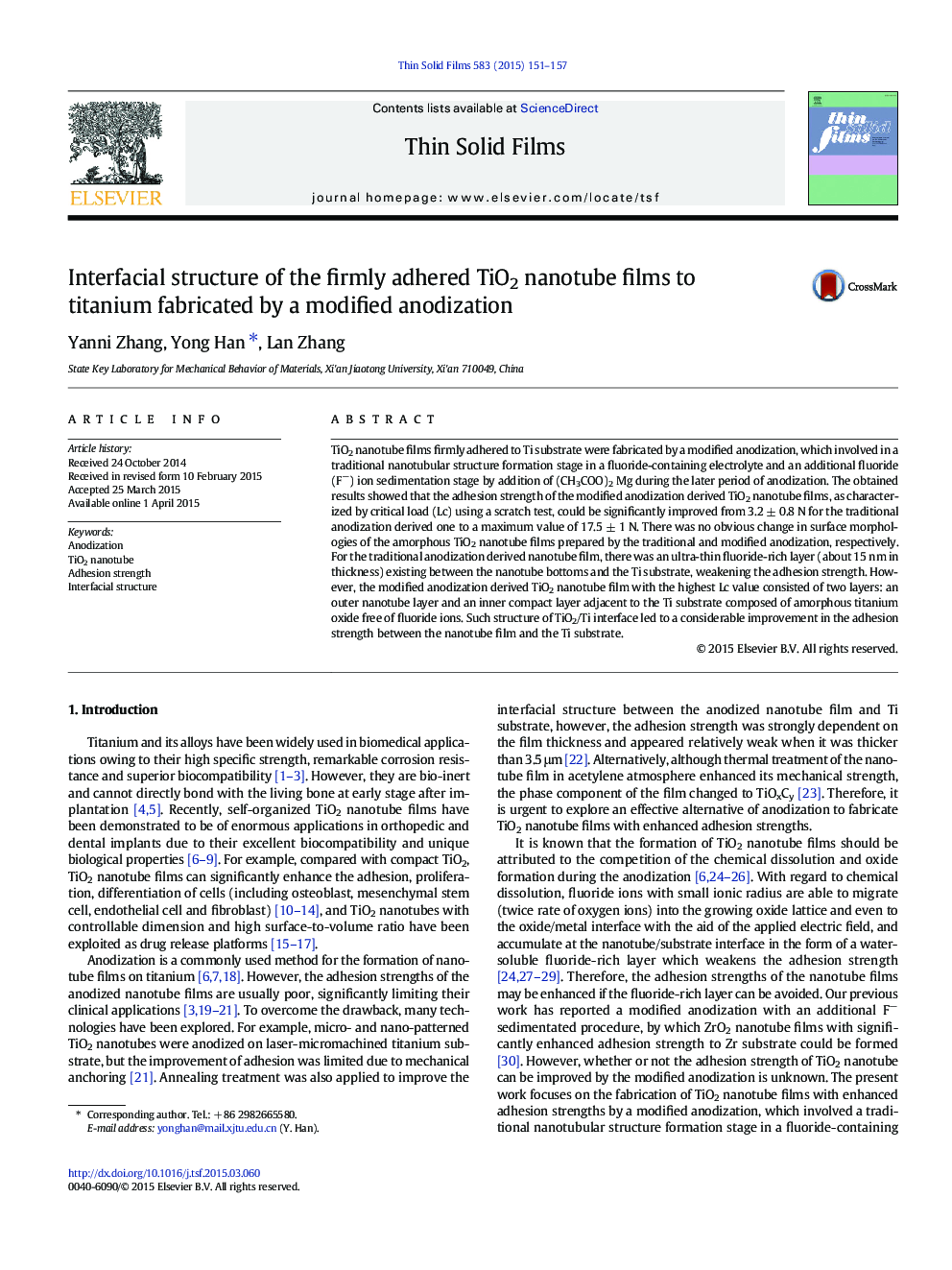| Article ID | Journal | Published Year | Pages | File Type |
|---|---|---|---|---|
| 8034114 | Thin Solid Films | 2015 | 7 Pages |
Abstract
TiO2 nanotube films firmly adhered to Ti substrate were fabricated by a modified anodization, which involved in a traditional nanotubular structure formation stage in a fluoride-containing electrolyte and an additional fluoride (Fâ) ion sedimentation stage by addition of (CH3COO)2 Mg during the later period of anodization. The obtained results showed that the adhesion strength of the modified anodization derived TiO2 nanotube films, as characterized by critical load (Lc) using a scratch test, could be significantly improved from 3.2 ± 0.8 N for the traditional anodization derived one to a maximum value of 17.5 ± 1 N. There was no obvious change in surface morphologies of the amorphous TiO2 nanotube films prepared by the traditional and modified anodization, respectively. For the traditional anodization derived nanotube film, there was an ultra-thin fluoride-rich layer (about 15 nm in thickness) existing between the nanotube bottoms and the Ti substrate, weakening the adhesion strength. However, the modified anodization derived TiO2 nanotube film with the highest Lc value consisted of two layers: an outer nanotube layer and an inner compact layer adjacent to the Ti substrate composed of amorphous titanium oxide free of fluoride ions. Such structure of TiO2/Ti interface led to a considerable improvement in the adhesion strength between the nanotube film and the Ti substrate.
Related Topics
Physical Sciences and Engineering
Materials Science
Nanotechnology
Authors
Yanni Zhang, Yong Han, Lan Zhang,
